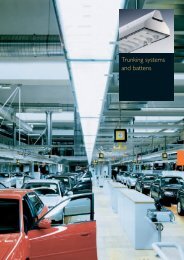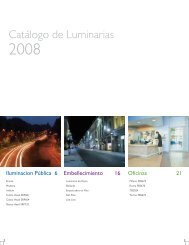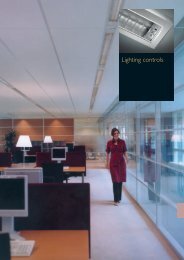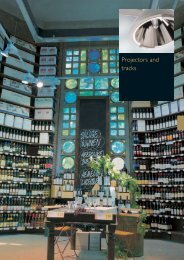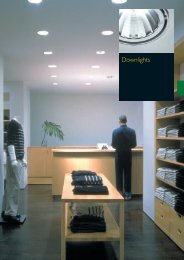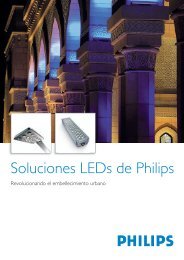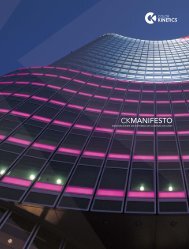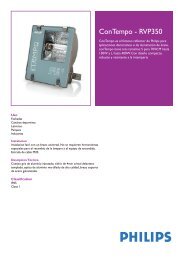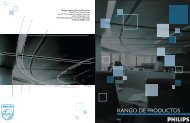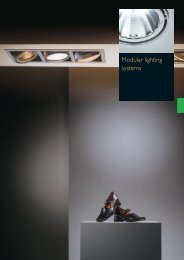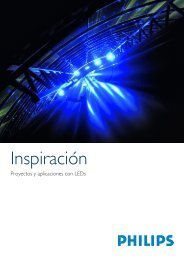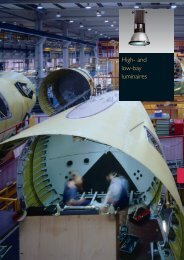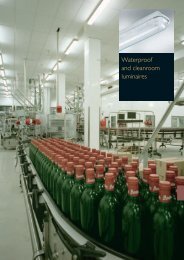General information, optic specifications, index
General information, optic specifications, index
General information, optic specifications, index
Create successful ePaper yourself
Turn your PDF publications into a flip-book with our unique Google optimized e-Paper software.
L956D957_SRC.QXD 11-03-2004 08:23 Pagina 12.19<br />
K1 is a profile spot without any spill<br />
light; this effect is achieved by equipping<br />
the luminaire with a mechanical or<br />
<strong>optic</strong>al device that cuts off the spill<br />
light; in this way, beams of different<br />
shapes can be produced.<br />
This classification can have high- or<br />
low-intensity beams, depending on the<br />
power and efficiency of the system.<br />
K2 is a spot which stands out due to its<br />
sharp shift to a minimal amount of spill<br />
light; this type of beam is excellent for<br />
creating theatrical and dramatic effects.<br />
This classification is usually associated<br />
with very high-intensity beams.<br />
K3 has a hard shift from a highintensity<br />
spot to spill light; the spill light<br />
is seen as a narrow ring of light around<br />
the spot.<br />
This classification is usually associated<br />
with high-intensity beams which are<br />
very suitable for creating theatrical<br />
effects.<br />
K4 has a soft shift from a relatively<br />
strong spot to a great deal of spill light;<br />
the spill light assists considerably in<br />
lighting the general surroundings.<br />
K5 is a uniformly wide beam without<br />
any visible spot and is, as a result,<br />
suited to general or supplementary<br />
lighting.<br />
Beam characteristics – K-beam categories<br />
Accent lighting requires a controlled beam of light, obtained by a<br />
lamp and a reflector, which in many cases is integrated into the lamp<br />
itself.The ultimate effect is largely determined by the characteristics<br />
of the beam.The important factors are the intensity, the shape and<br />
the dimensions of the spotlight created by the beam and the amount<br />
of spill light. Spill light is the amount of light that is allowed to spread<br />
outside the actual beam.<br />
A 'hard-edged' beam is a light beam with little or no spill light and<br />
gives a sharply defined contrast. It lends itself to very dramatic<br />
lighting effects.<br />
A 'soft-edged' beam has a higher degree of spill light and will result<br />
in a lower contrast with the surrounding area.The effects are much<br />
softer than those obtained with a hard-edged beam.To help you<br />
make the right selection, Philips has a special classification for its<br />
reflector lamps and lamp/reflector combinations, identifying five socalled<br />
K-beam factors.The final effect is, of course, influenced by the<br />
contrast between the ambient lighting and the lighting intensity of<br />
the beam.<br />
Identifying the five K-beam categories<br />
The illustrations here give a good impression of the effects of the<br />
various types of light beams identified by the Philips K-beam<br />
classification.The relevant light beam creates these effects only,<br />
without any supplementary lighting.<br />
GENERAL INFORMATION, OPTIC SPECIFICATIONS, INDEX 12.19



